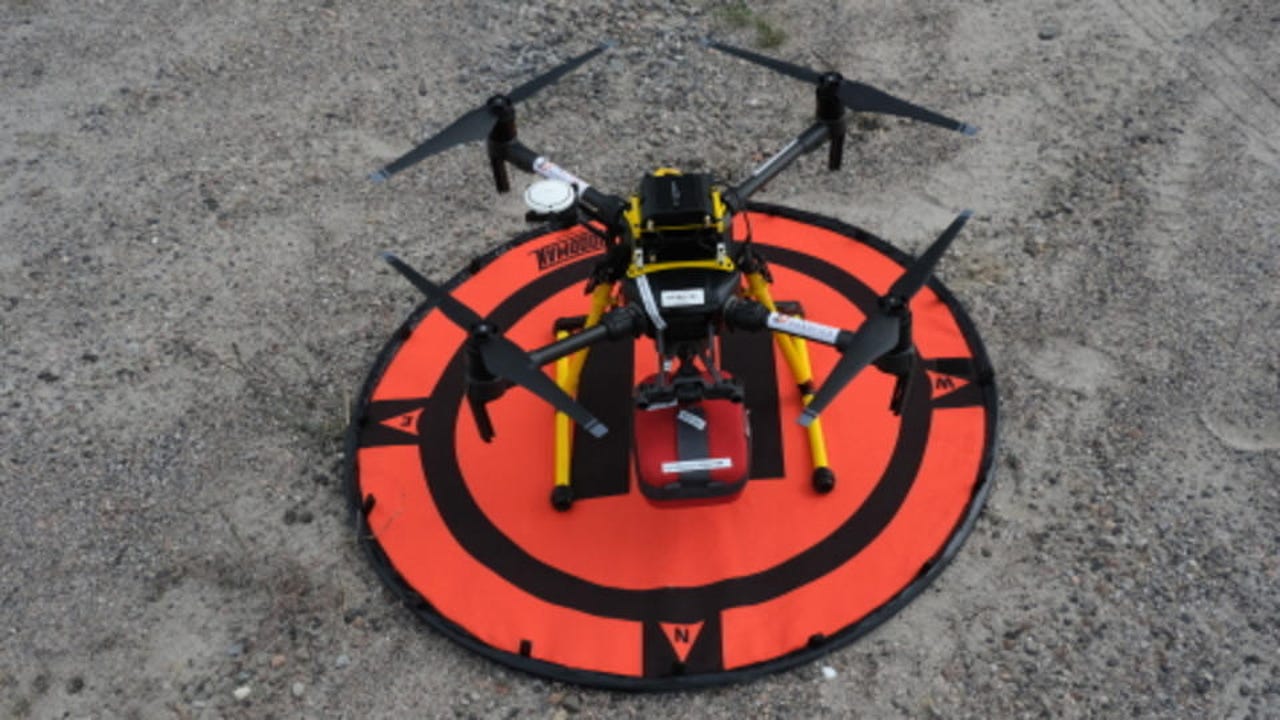Drones deliver life-saving emergency defibrillators in Canada


Must-see offers
Drones are playing an increasing role in emergency response, from disaster relief and search & rescue to delivering life-saving medication in remote areas. Recently concluded trials in Ontario have found that equipping drones with defibrillators could save lives by cutting the time it takes paramedics to arrive on the scene.
Drones in the trial, which wrapped up last month, utilized 4G LTE connectivity to enable beyond-visual-line-of-sight (BVLOS) drones to deliver automated external defibrillators (AEDs) to the scene of a cardiac arrest. The County of Renfrew in Ontario worked in partnership with technology partners like InDro Robotics, Cradlepoint, and Ericsson.
During the trial, the county's Paramedic Service flew the LTE-connected drones carrying AEDs to locations in a 10-mile operating radius that are BVLOS of emergency services. The project required special permission from the Canadian aviation authority. The idea is to significantly expand the reach of emergency services, particularly in remote and rural areas. Getting AEDs to the location of a cardiac arrest victim can improve survival rates significantly.
Following trials, the technology partners are declaring the project a resounding success.
"Given the large area and varied terrain that the county encompasses, it is often difficult to get paramedics to patients in a timely fashion, so we have taken a layered approach to their response. We have been successfully using drones to support our emergency responders for several years, but until now, the operators have had line-of-sight of the situation. We will now have further reach than ever," explained County of Renfrew Paramedic Chief Michael Nolan. "What's particularly innovative and exciting about this trial is the potential of drone-delivered AEDs to have a transformative impact on emergency care for patients suffering cardiac arrest, especially those in remote private, residential or rural settings, where getting emergency treatment rapidly is the difference between life and death."
Controlled via a cellular network and sent to points selected by GPS, the AED-equipped drone arrived at least seven minutes before the paramedic vehicles during each test run. InDro Robotics supplied the UAV hardware, with Cradlepoint providing its NetCloud Service, including an on-board, rugged IoT router that enables LTE connectivity for control data and video between the vehicle and its pilot.
According to a spokesperson for the project, previous line-of-sight trials using drones to assist emergency services have operated within the limitations of non-cellular communications technology, limiting them to trips of approximately 4.5 miles. Using LTE, patients as far as 80 miles away could receive assistance.
"This new drone technology is especially exciting when integrated into critical scenarios for paramedics – effectively enabling AED 'on the fly,'" noted Philip Reece, CEO, InDro Robotics. "At InDro Robotics, part of what we focus on is custom design solutions for complex missions, and this is a perfect example of how drone software and hardware can provide a scalable solution to a very real problem. We're thrilled to be part of this partnership, and to be able to demonstrate the capacity for drones and cellular technology at this life-saving trial."
The drones are equipped with collision avoidance. The threshold for BVLOS flying is high in the U.S. and Canada, where the regulatory allowance of drones in commercial scenarios has been slow to arrive. Participants in the Ontario tests hope the results of the test will help lower the bar for using drones in emergency response.